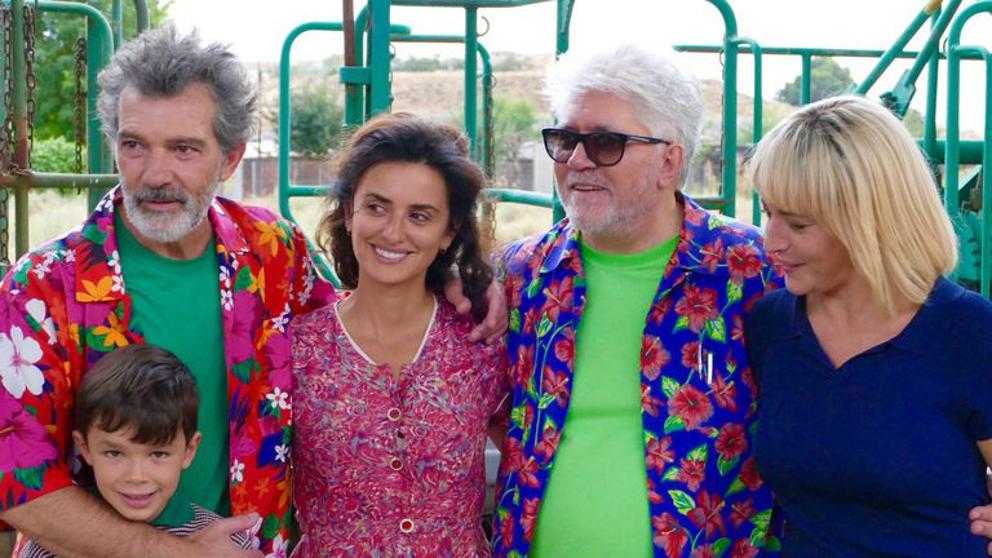 Pain and Glory (original title: Dolor y gloria) is the latest film by the Spanish director Pedro Almodóvar. Released in 2019, it stars Antonio Banderas as the protagonist accompanied by a series of great-caliber actors and actresses (and mostly old acquaintances of Almodóvar) such as Penélope Cruz, Cecilia Roth, Leonardo Sbaraglia… In my opinion, either you love or you hate Almodóvar’s cinema, and I admit that I don’t particularly love it. I’ve seen six of his movies so far and no one impressed me, and I only enjoyed a couple of them.
Pain and Glory (original title: Dolor y gloria) is the latest film by the Spanish director Pedro Almodóvar. Released in 2019, it stars Antonio Banderas as the protagonist accompanied by a series of great-caliber actors and actresses (and mostly old acquaintances of Almodóvar) such as Penélope Cruz, Cecilia Roth, Leonardo Sbaraglia… In my opinion, either you love or you hate Almodóvar’s cinema, and I admit that I don’t particularly love it. I’ve seen six of his movies so far and no one impressed me, and I only enjoyed a couple of them.
Pain and glory is, for me, among its best, even if it has some shortcomings which I believe are inevitable given the proportions reached by the “Almodóvar” character. In fact, now he’s more than a director, he’s an institution, which basically means that he can do absolutely everything he wants, including following his own rules when making a movie.
Pain and Glory tells the classic story of an artist in decline who lost his inspiration and finds himself a bit disoriented. But thanks to experiences reminding him of his past and thanks to some friends, he’ll get back to his normal life. We’ve seen it a thousand times, haven’t we? But of course Almodóvar tells this story in his own way and, in my opinion, it’s a messy one. First of all, there’s a fictional protagonist but Banderas perfectly imitates Almodóvar himself. I’m confused: is it his story or not? What’s true and what’s not? If the character is invented, why is he so blatantly similar to the director?
Then the movie is nothing short of discontinuous. It begins with an intrusive narrative voice that disappears about a quarter into the film. There are characters that seem very important but are suddenly forgotten and others that appear in few scenes but have key roles. There’s an animated part that comes from nowhere and leads to nowhere and that I found very unimaginative. And there are tons of flashbacks inserted without an effort to make them blend in: they are thrown into the movie to explain from time to time some situations, some thoughts, but without a well thought out architecture.
For the rest, you’ll find all the elements dear to Almodóvar: the figure of the mother is extremely present, the Catholic education is there like in Bad Education (La mala educación, for me that’s his best film, at least among those I saw), the color red is literally everywhere, there’s no mystery over the protagonist’s homosexuality… in short, this is familiar ground for the director. Which means that if you like his cinema you’ll love Pain and Glory. If you are not a fan, like me, maybe you’ll simply find it nice, but nothing more than that. Ciao!
PS: and here’s the list of the other movies by the same director that I saw and reviewed on the blog: Women on the Verge of a Nervous Breakdown (Mujeres al borde de un ataque de nervios, 1988), The Skin I Live in (La piel que habito, 2011), Volver (2006), and All About My Mother (Todo sobre mi madre, 1999).
External links:
- The movie trailer on Youtube
- The movie page on Internet Movie DataBase
- Movie review on Film school rejects
- Movie review on Film-momatic reviews
- Movie review on Grouse beater
- Movie review on Simon Dillon books
- Movie review on f/stop reviews
Ciao! Great review! You really lifted my hopes up regarding this film. I thought it would be ok, but now when I read that most Almodovar’s trademarks are present in this film, I think I will be raving about this one.
"Mi piace"Piace a 1 persona
If you enjoy his movies, I’m sure you will love this one! Thank you for passing by and for your kind words!
"Mi piace"Piace a 1 persona